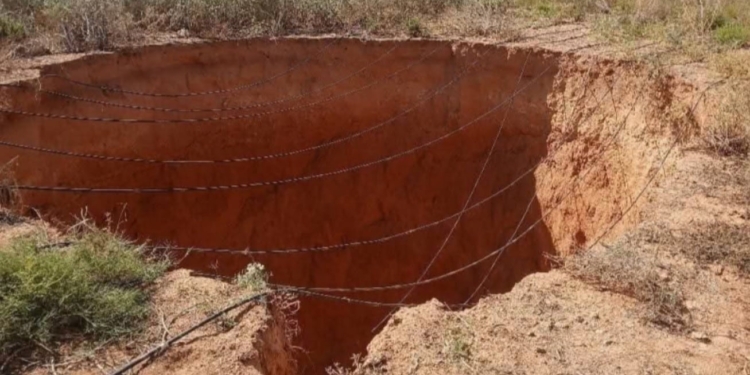The region of El Gharadhab, in the delegation of Ghomrassen (governorate of Tataouine), was the scene of a spectacular land subsidence, having caused the appearance of a deep and circular crater.
According to residents’ observations, the ground suddenly subsided at the level of an agricultural passage, leaving a cavity more than 25 meters deep and approximately 8 meters in diameter. Local authorities went to the site to assess the situation and secure the perimeter.
Contacted by the media, Mohamed Sadok Salem, professor at the Faculty of Sciences of Gabès and director of the Earth Sciences department, explains that it is a landslide or collapse of land due to underground voids.
These voids result from the excessive exploitation of groundwater, which weakens the structure of the subsoil, particularly in agricultural areas.
The professor recalls that a similar incident occurred in Sidi Bouzid, a region also rich in water resources. This type of collapse occurs especially in agricultural land, where the looser soil reacts strongly to the drop in the water table.
The El Gharadhab region, located about fifteen kilometers from Tataouine, is home to several agricultural and industrial projects, including the South gas station, as well as numerous irrigated areas and water wells.
For the moment, no homes are threatened, but this incident reignites the debate on the sustainable management of water resources and the geological risks linked to their overexploitation. Experts recommend in-depth geotechnical studies to prevent further subsidence.






